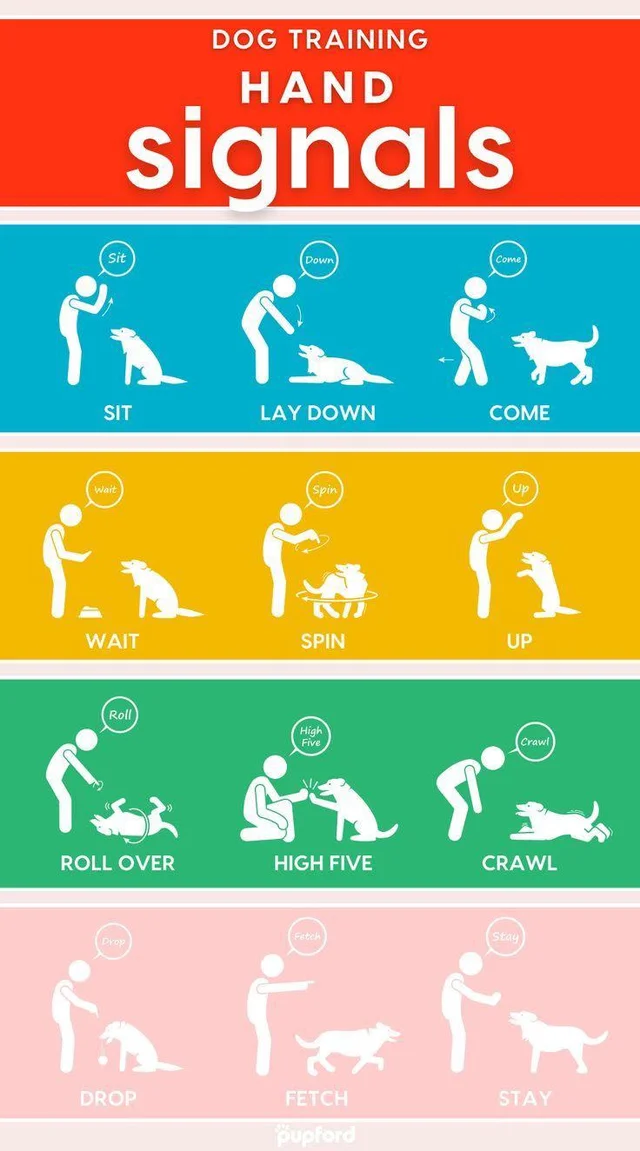
Dog training is one of the most rewarding things you can do with your canine companion. Not only does it make your dog happier, but it also makes your bond stronger. Dogs that are trained will be more responsive to your commands and less likely to get into trouble because they know how to behave.
Hand signals are an important part of dog training and can help speed up the process of teaching new behaviors. There are many different hand signals that you can use, but we’ve compiled a list of 12 of the most common ones above
Before you dive into hand signals, there’s one more thing you should know:
Make sure to use the same hand gesture every time you want your dog to do a specific trick. If you start out by signaling for sit with your left palm facing down, don’t switch it up and expect your dog to understand when you use your right palm facing up. Think of it as a language—consistency is key! Your dog will only be confused if they think they have learned one word but are suddenly being asked to learn another. Practice using the hand signal without your dog around first so that they can’t read any cues from your facial expressions or body language. Once you feel confident in using the gesture, bring in your pup and show them what it means by cueing them with a verbal command (sit) or some other rewardable behavior (ex: raising an open palm over their head). Use hand signals to reduce stress for dogs who are sensitive to touch or who may not like being patted on the head for praise (like kids on Santa’s lap). This can also help reinforce good behavior more effectively than a verbal cue alone might do because there is less chance of confusing them with conflicting commands from different family members sharing responsibility in training efforts at home.
You’re probably thinking that most dogs don’t understand the point of hand signals. Well, you could be right. But hand signals can do more than show your dog what you want them to do—they also make training more fun, especially if you have a positive attitude about it. Dogs really love being able to understand what their owners are saying to them and will often get excited when they figure out how to communicate with them in ways other than barking or licking. Hand signals are one way for dogs to figure out how we humans talk with our hands, so why not use them during training? It’s like teaching your dog a new language!
